The pleasant warmth of spring has given way to the sweaty heat of early summer. It's strawberry season, and my younger son and I have made two trips to the local pick-your-own farm. I've missed this opportunity for the last few years in the hustle and bustle of spring, and I'm glad to get back to the ritual of bending down to part the leaves and pluck the plump fruits, then rising to catch the breeze that blows unimpeded.
Though less than two miles from away, the soil there couldn't be more different from the slab of clay we call home. The berry farm sits on a perfectly flat deposit of sand in the wide floodplain of the Ohio River. For about a month out of the year it transforms into a small piece of heaven. Small family groups, most with young children, spread out across the expanse in search of the perfect berry. Wherever they disturb the leaves, the intoxicating fragrance of ripe strawberries rises.
The artificial world of screens and pixels seems far away as calls of encouragement to children are heard up and down the rows, interspersed with discussions of jam and shortcake. Each small group might be strangers to the others, but we are all connected as we engage in the very human activity of foraging. My family's portion of the bounty will be eaten fresh, frozen for smoothies, and turned into dessert per my grandmother's recipe for authentic southeast Ohio shortcake.
The time of good eating is upon us. Culinary adventures this month included a batch of kkakdugi, or cubed radish kimchi. This lacto-fermented product is best after a few weeks of aging and I'm eagerly awaiting a taste. This is my sophomore experiment with kimchi, after last year's beginner batches of green cabbage kimchi. Kkakdugi is traditionally made with Korean radish or mu. I used the white icicle radishes shown in picture below, which seemed to me the closest in type of the seeds that were available. They sprouted and matured like lightning, making for a quick and early side dish.
It's too early for the masses of hot weather veggies that will soon pour from the potager, but a quick trip to the garden yielded garlic scapes, a few peas and asparagus spears, the last broccoli florets, and a pak choy that wasn't completely destroyed by slugs. Fried up and mixed with rice and scrambled eggs, this miscellaneous harvest makes for an easy supper. Fresh vegetables perfectly cooked don't need dressing up — a dash of soy sauce and sesame oil complete the dish.
In the 2010’s, when we hosted farm helpers through Helpx (a program in which a few hours of work each day is traded for room and board) I was surprised that none of younger people cooked. Or, they might have cooked for themselves, but adopted a deer-in-the-headlights look when presented with the fact that they could fulfill their work requirement partially by cooking for the household.
It was dismaying not because they lacked skills, but because they were missing a link in the chain of connection between humans and the land. They were interested in gardening and outdoor work in general, but were without this very important piece: the ability to make a nourishing and delicious dish from what is available at the moment and thereby reap the final, delicious reward after all that work. Of course, they enjoyed (I hope) my cooking, but I sincerely wish they went on to become competent cooks.
The most exciting part of May is the baby chicks. Not adrenaline-rush exciting, but rather satisfying-accomplishment exciting. There's nothing wrong with ordering chicks and raising them in a box under a heat lamp. It's possible to produce healthy, happy chickens this way, and more importantly, it's safe. But allowing a hen to fulfill her biological destiny and raise a brood of babies is incredibly gratifying in a way that raising hatchery chicks is not.
Our barred rock mother-to-be choose the highest, most inaccessible level of the barn where she laid her eggs on the bare wooden floor. She tolerated us moving them into a hay-lined cat carrier that was snapped shut and relocated to a lower level when peeping was heard. She now guards the chicks ferociously and spends her days ripping up aged manure in a neverending search for tender invertebrate morsels.
About half the chicks resemble her and the others are black with a subtle white neck ruffle. None looks anything like the father, the light Brahma pictured below. I'm no chicken geneticist, but something seems fishy here.
As we draw close to June, growth is already out of control with blackberry brambles and honeysuckle swallowing fences, and multiflora roses reaching into the driveway. Left unmolested, the canes would soon meet in the middle and make the lane impassable. I've pulled hundreds of tree seedlings from the garden, and must devote a few minutes every day to removing weeds lest they overrun the place. I love these natives in the woods and fields, but without constant vigilance my garden would disappear beneath the onslaught of violets, aster, wingstem, poison ivy, and black cherries in a matter of weeks. Meticulous design and a tenacious belief in the weed-free food forest will not change this fact.
It's the time of year that I am reminded to be grateful for our motorized tools. I don't revel in using noisy, gas-guzzling machinery, and in fact work on minimizing its use over time. But without mowing and clipping, our nature paths would quickly be choked and impenetrable, and the forest would creep under the foundations of the house and barn. This is the reality of the parts of the humid eastern U.S. that receive seed rain from healthy areas of forest and woodland.
In other exciting news, we have adopted a six-legged horse. Despite the extra appendages, the animal appears healthy and happy, and is tolerated by the rest of the herd.


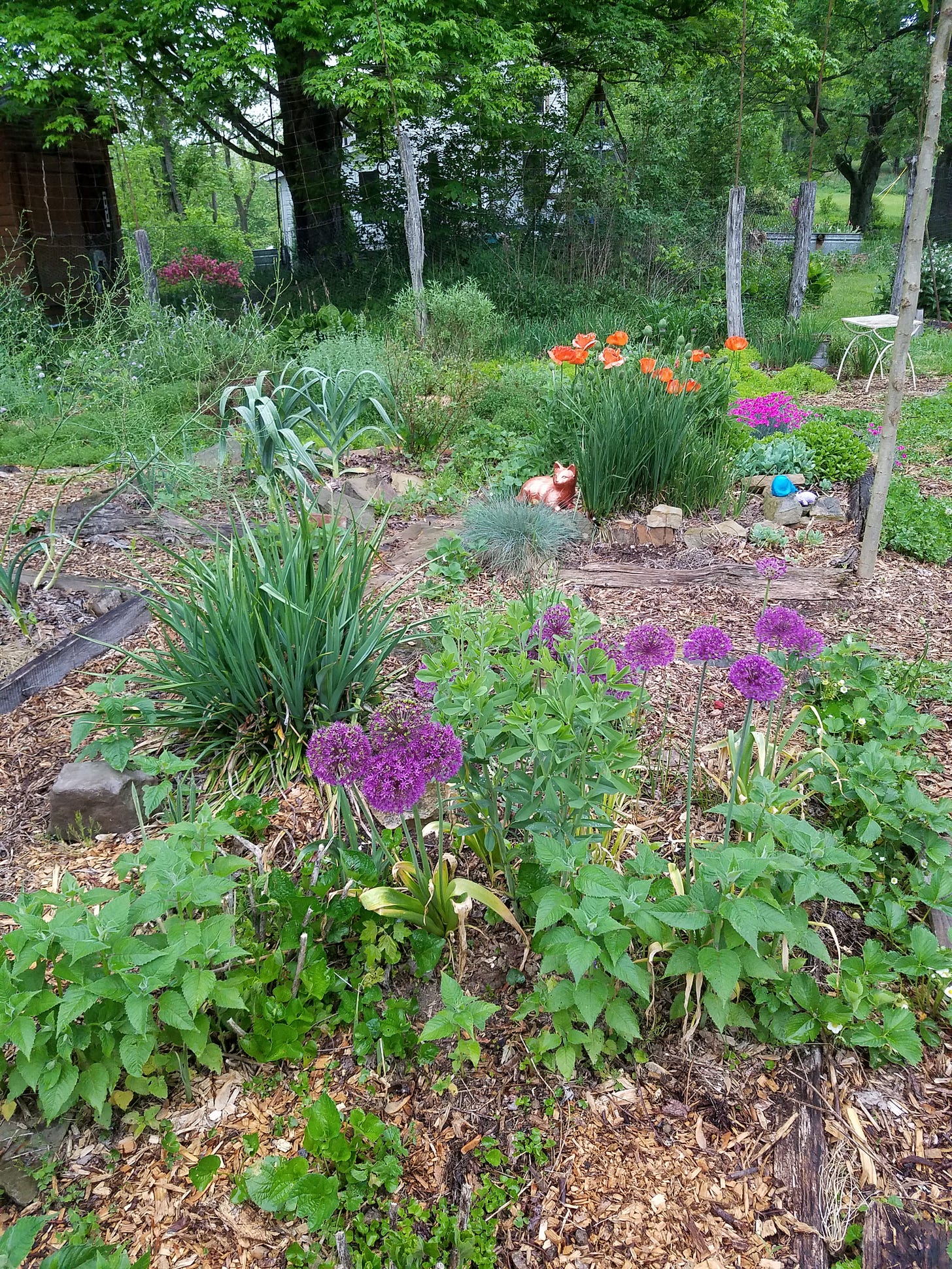

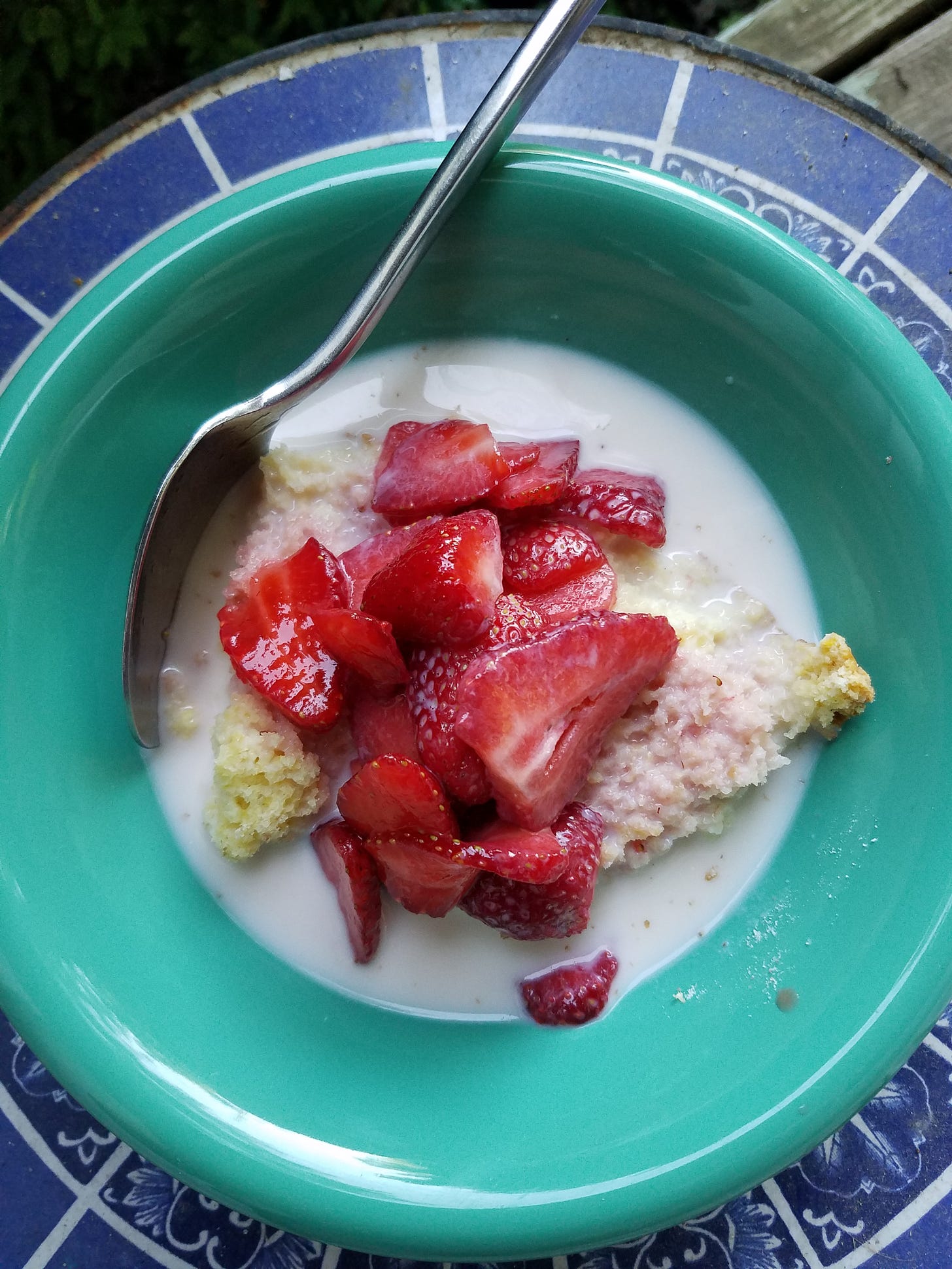


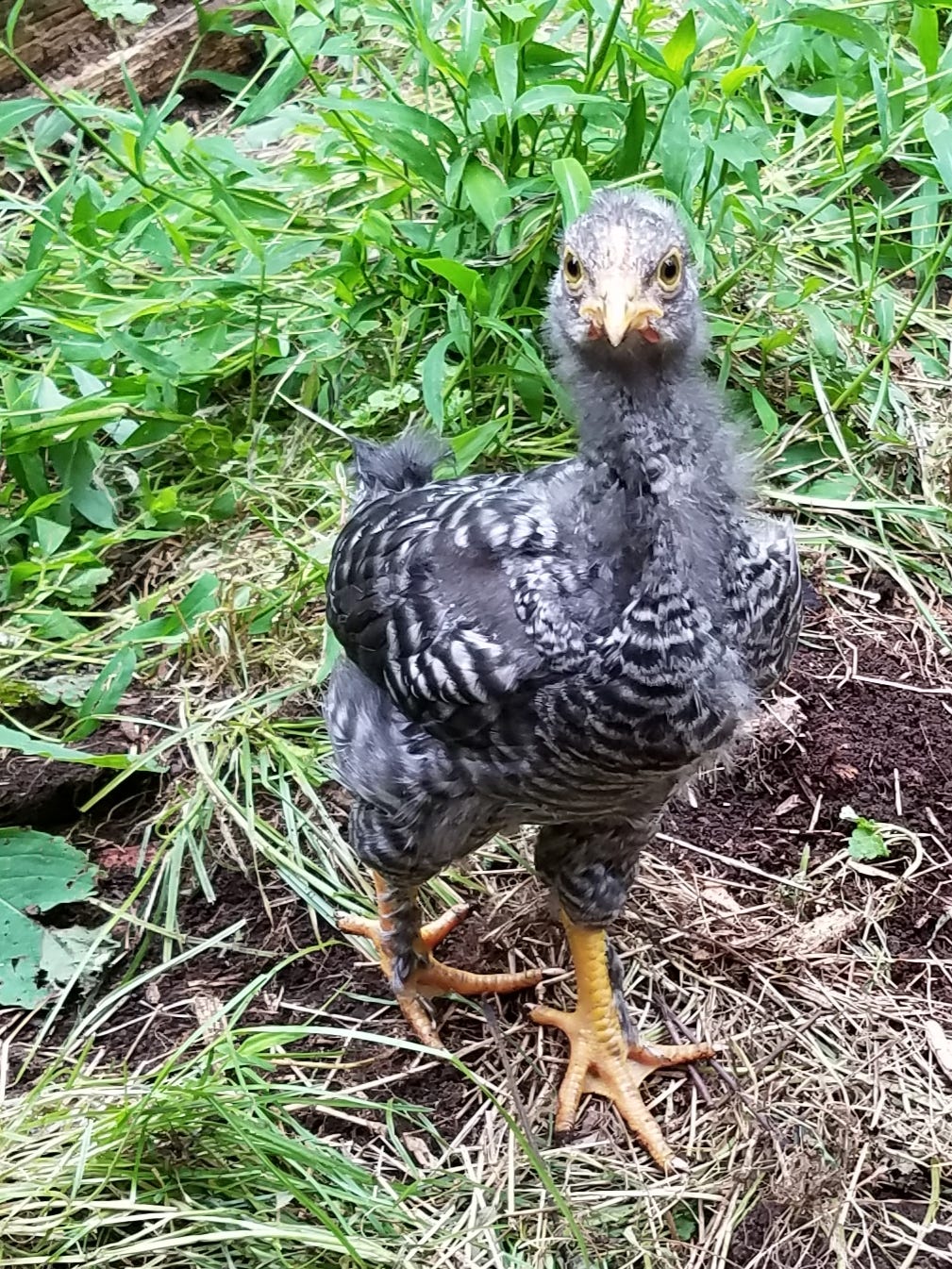



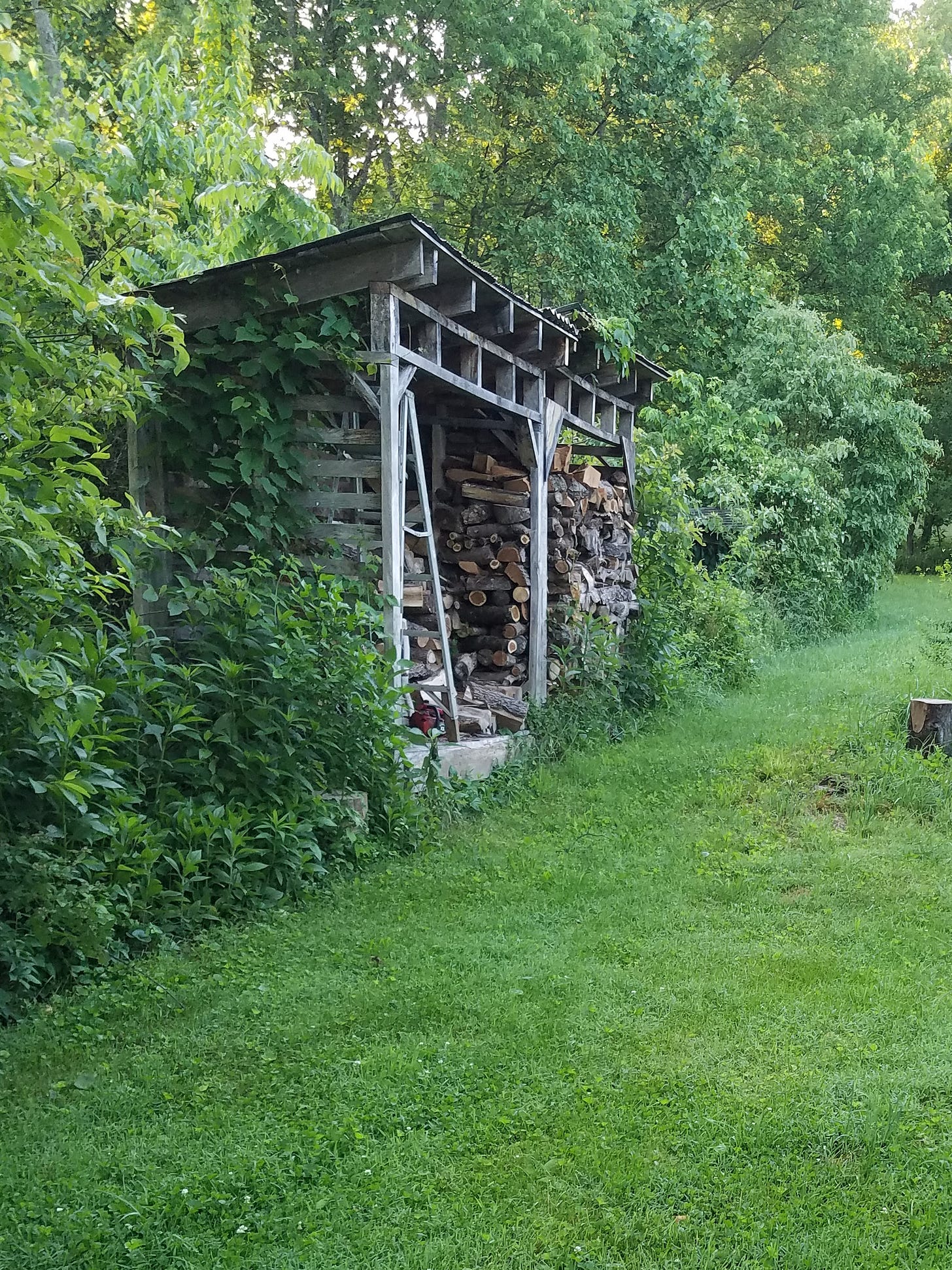
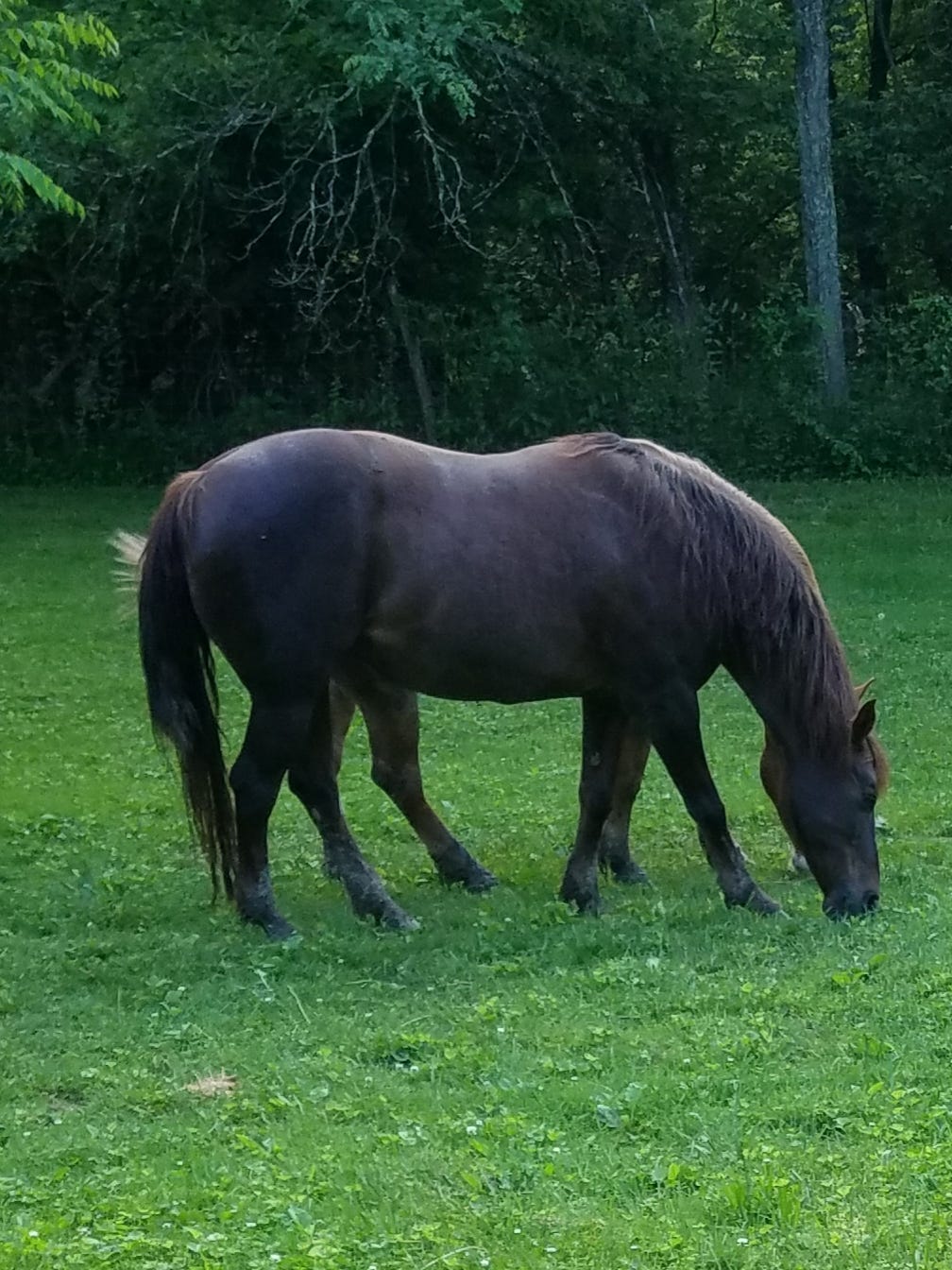
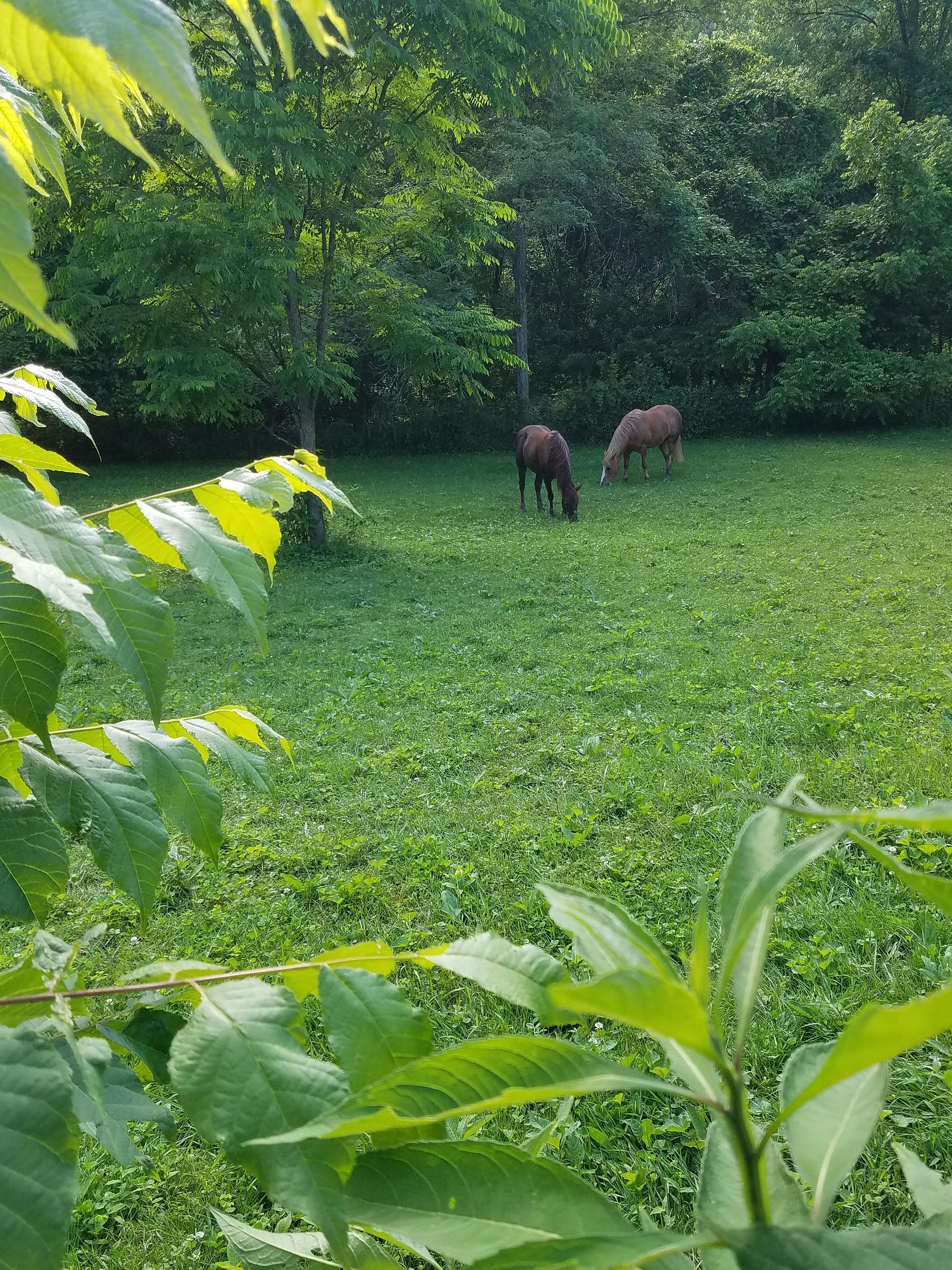
Funny how one picture can bring back a flood of memories. The strawberry field photo took me right back to picking berries for pocket money in the seventies...and your barred rock photos took me back to the last time I had chickens. I'd raise another batch of chicks if I was planning on staying here.
Sounds like you eat really good when the garden starts producing. Those pics made me hungry.
Berry nice. There's a lot of new vocabulary for ignorant townspeople like me like, kkakdugi (we need phonetic spelling for that one), potager, scapes, florets, pak choy (something tells me that's the same as bok choy which is a staple in Cantonese restaurants around here). Your columns are always insightful. Have you ever thought of doing a print book? Forty acres and a six legged horse?